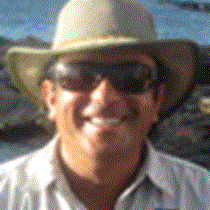North Seymour and Rabida Islands
Instant gratification is what all visitors to North Seymour get when visiting this place. Here coexist two colonies of magnificent and great frigates, which at the present time are nesting. The walk through the trail takes us close to these nesting sites, where we can see the male frigates displaying their red gular pouches fully inflated, to court the females that fly nearby. Some have already succeeded and are sitting on nests, where a single egg has been laid. Next to them, but on the ground, blue-footed boobies are doing a similar sky-pointing display, as they whistle and hunk to their partners.
This island is a good place to find land iguanas that were introduced from Baltra Island back in the 1940’s, in an attempt to rescue them from extinction due to the presence of introduced goats. Today they enjoy a pristine environment, and they nest safely due to the efforts of the Galápagos National Park Service to eradicate introduced animals.
Snorkeling later on shows us the richness of these waters, as we are delighted to swim close to several species of tropical and subtropical fish.
As we head toward Rabida Island, our captain finds a medium-sized pod of bottle-nosed dolphins, which ride along with the National Geographic Endeavour. Upon arrival, this island offers us all another outing for shallow and deep-water snorkeling, and here we observe sea lions underwater, a great highlight of this place.
From the National Geographic Endeavour, kayaks are deployed and we come up-close to the red cliffs, made by iron oxide basalt, making a wonderful contrast with the pale grey and green vegetation typical of the arid zone. Later we take the Zodiacs to the island for our first wet landing, as we look for the famous Darwin finches, mockingbirds, doves and pelicans that inhabit this coastal trail.




